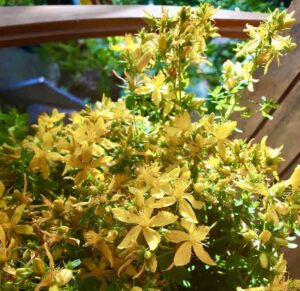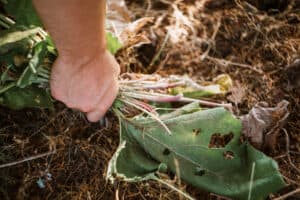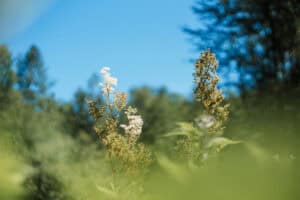Table of Contents
I’ve been getting a lot of emails and requests for me to share some of my thoughts and perspectives in regards to holistic herbal medicine and how you can support your family and community during this pandemic. So, in this video class I’m going to share some of my approaches and how you might use herbs and natural remedies in response to this situation.
First off, I really want to start off by sending out my condolences to everyone that has been directly affected by Covid-19. Whether that’s yourself, friends, family members, loved ones, people in your community that have been infected by this virus or indirectly affected by it through loss of work, just being at home, and all of the changes and shifts that are happening globally right now. I just really want to send out my heartfelt compassion to everyone that is being affected by this because this is a pretty big deal that’s going on right now. I believe that as herbalists we have a critical role to play here. We have at our disposal the power of these medicinal plants to help to protect us as well as to help treat ourselves in the case of being exposed to this virus.
Now, before I dig into the main teachings I want to make sure you’re aware I have not treated anyone with Covid 19 and in now way am I claiming to have the miracle cure for this virus. My goal here is to share big picture overarching strategies that herbalists use in the treatment of viral based respiratory infections.
Aromatic & Antimicrobial Herbal Steams
Fumigation, also referred to as smudging, is a practice that has been in place for a very long time in many cultures around the world. Most plants contain volatile oils that have a certain degree of antiseptic properties to them. When you burn them, those constituents volatilize into the air and can come into contact with any airborne pathogens and can neutralize them.
There are lots of different plants in this category. A lot of the Artemisia’s have been used in this way: Mugwort and Sagebrush to name a few specifics. All of the evergreens- Cedar, Pine, Spruce, and Fir are herbs very rich in volatile aromatic and antimicrobial essential oils.
Now another method for fumigation which is more common in our modern age is using a diffuser with essential oils. As trendy as diffusing essential oils is, it can be a greatly effective method for fumigating and disinfecting the air in a contained space. However, I caution against using essential oils regularly as I don’t believe it’s a truly sustainable form of herbal medicine. Many essential oils sold are from plants which have been over harvested and are on their way to being at risk – such as Frankincense or Sandalwood.
A more simple and much cheaper method of diffusing essential oils in your home is just boiling herbs on your stove, which is essentially achieving the same purpose. You can go out and gather any type of evergreen tree and put it in a pot of water, stick it on your stove and gently simmer the herbs to allow that steam to permeate through your home as a means for purifying the air.
Using these types of aromatic plants to purify the air and the space that you’re living in can be a critical way to absorb the healing qualities of volatile herbs into your respiratory system while also cleansing the air around you.
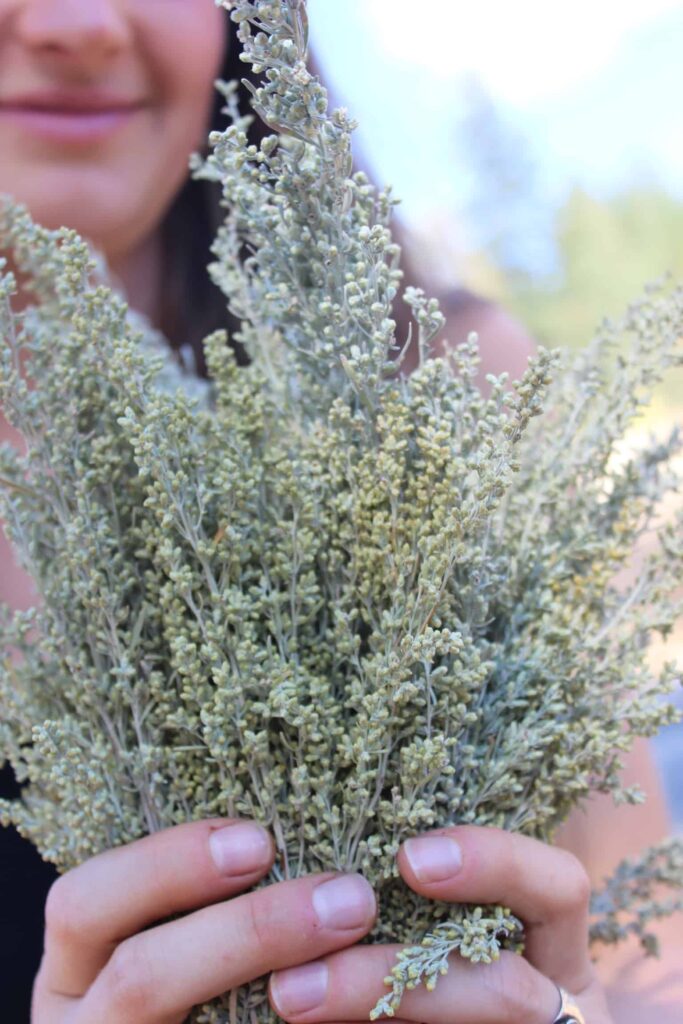
Herbs for Strengthening Immunity
Before talking about specific herbal remedies, I’d like to just offer a little reminder that the foundations of health start with getting ample restful sleep, optimizing digestion and making sure you’re eating healthy nutritious food, drinking lots of water, getting some movement and exercise in each day, as well as managing your stress levels.
Now onto herbal medicine where we can use plants in a way to strengthen our overall immunity, vitality and specifically the health of the respiratory system. This is an overall category of herbs that we might refer to as respiratory trophorestoratives, or alongside would be what we might refer to as an immune tonic. These are remedies that are oftentimes used for people that have weak, low deficient immune systems. This can be on the mild side of people who constitutionally have weaker immune systems and respiratory systems. They tend to catch every little cough, cold, and flu that is floating around in the air. This category also covers the more severe situations where people have compromised immunity due to things like cancer or other more severe diseases that depress their immune system. These are remedies that we can use generally while we’re not acutely sick to keep us that way. That’s the way I always like to explain these plants or remedies, because many times these remedies are actually contraindicated during an acute illness and are only used to keep you healthy.
Some of my top remedies that I’m suggesting people work with if they are constitutionally suitable for you include there’s three main ones that I personally really like to specifically strengthen the respiratory system as well as the immune system.
Astragalus (Astragalus membranaceus)
This is a remedy that comes from Chinese medicine and it is classically used to improve respiratory health, improve immunological function, and to “close down” the surfaces of the body. It’s actually what we might refer to as an “anti-diaphoretic”. It inhibits excessive sweating, closing the pores and protecting the body from external invasion. This is one thing that I think a lot of people misunderstand about Astragualus, and I see this plant misused a lot. A common misconception with this herb is that it’s referred to as “good for the immune system” therefore people think it’s good to take during an acute sickness. However, this is actually the opposite of how to use Astragalus.
When you have a fever that oftentimes will accompany a flu, your body is trying to sweat it out, but Astragalus is actually closing the pores of the skin. So, they say in Chinese medicine that this plant strengthens the wei chi, which is that protective mechanism of the body. It is said that during an acute infection, if you use Astragulus, you are actually driving it deeper into the body, which we don’t want. So Astragalus is a really great plant to take as a preventative medicine, but not in an acute illness.
Keep in mind that it does have a warming, energetic quality and a moistening energetic quality. This is particularly beneficial here as it seems that earlier stages of a Covid infection do tend to lead to a very dry respiratory system which we’ll talk about more later. Astragalus can be a really great means for helping to maintain the proper health of the respiratory system, as well as strengthening immunity.
Cordyceps (Cordyceps militaris):
Cordyceps is a mushroom remedy used to strengthen the vital energy of the lungs. It’s a plant that’s used to build and strengthen the constitutional vitality of the respiratory system, as well the immune system. Keep in mind though, Cordyceps can be a little stimulating for some people, so it’s good to use smaller amounts of this remedy. Because this is a fungi that is working through the endocrine system, it has adaptogenic effects.
Reishi (Ganoderma lucidum, G. oregonense):
The other remedy that is probably my favorite is Reishi mushroom. I live here in the Pacific Northwest where we have a local Reishi that grows near us. Reishi is a powerful immune tonic, as well as an excellent respiratory trophorestorative.
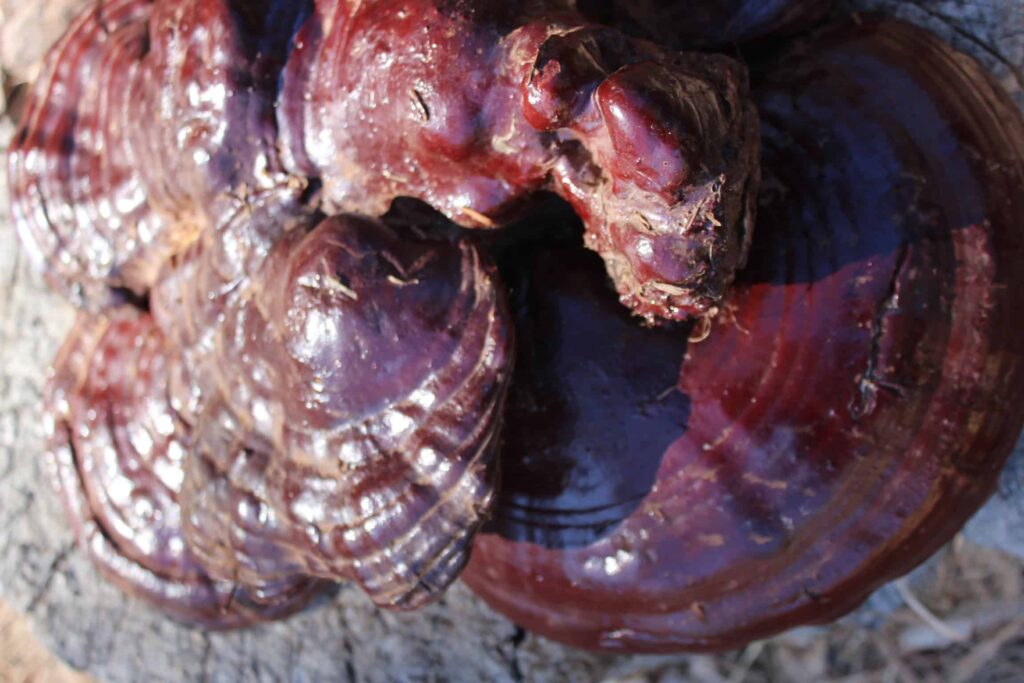
Remedies for Managing Stress & Supporting Immunity
Keep in mind that the more your stress levels go up, the more your immunity drops. The more that you can manage that stress, nervousness, anxiety and overwhelm, the better. In that way, I would say our whole nervine materia medica is good to consider here. If you’re finding yourself really stressed out, work with some nervines just to stay calm. A few of my favorites include, Lemon Balm, Skullcap, Passionflower, Motherwort, Chamomile, and Valerian.
Holistic Perspectives on Treating Viral Infections
I want to start off discussing the difference between a holistic versus allopathic approach to treating a viral infection. From a holistic perspective, it’s not so much about killing the virus, rather it’s looking at the ecological state of the tissues of the body. A virus or any organism has its preferred habitat. It has its ideal place that it likes to be. It has certain ecological factors in the body that are inhospitable to that virus.
From the holistic orientation, generally speaking, we don’t just want to think in terms of “kill the virus”, we want to think in terms of adjust the ecological state of the tissue to make it inhospitable to these pathogens. This is where looking at what the Physiomedicalists would refer to as the tissue states or in Ayurveda we would look at what is the quality of the doshas. We’re looking at basic constitutional factors of an organ system. What’s the temperature of the tissue? Is it really hot and irritable and inflamed? Is it cold and depressed in its function?
Therapeutics for the Respiratory System
An important consideration in regards to the respiratory system is the quality of moisture. The respiratory system is lined with a mucosal membrane, which will quickly become distressed in either a too dry or too damp tissue state. We can see that in terms of the mucosal membranes becoming overly dry or damp, we can see that in the smooth muscles lining, the bronchioles either being overly relaxed or overly constricted. We can see this in terms of the deeper anatomy of the lungs with the alveoli and their ability for gaseous exchange, the potential damage to the cilia or the hairs that line the respiratory system that allow mucus to be swept out of the system.
To support the specific state of the tissues, I’ll be sharing the main categories of herbs to support the respiratory system which will extend beyond antiviral herbs.
Expectorants:
The first big category here is our expectorants because typically when we’re looking at respiratory infection it tends to be accompanied by a cough. Expectorants are generally thought of as remedies that will facilitate the removal of mucus from the lungs. It’s important to consider here that that is different from an antitussive. An antitussive is basically a cough suppressant. That’s what most over the counter cough medicines do as they will actually suppress the cough. The problem with that is that the cough is considered an intelligent response of the body to a pathogen. That cough is there for a reason!
This is another distinguishing factor between an allopathic and a holistic approach. In an allopathic approach, the cough is the enemy because it sucks when you have a cough. You don’t feel good and it hurts and you want it to go away. So in the allopathic approach, cough equals enemy; in the holistic approach, cough equals friend. It’s uncomfortable, but it is an intelligent response of the body and we want to support that. We want to support the innate intelligence of the body, not suppress it. So, expectorants are generally plants that support that cough to be more productive.
Now, oftentimes we’ll see the expectorant category on its own, but what’s really important here is that there’s a lot of different types of expectorants and a lot of those plants are very different. Further refinement of this classification of plants is important for us to get more specific about what types of remedies are going to be beneficial here. The main differentiation that I think of in terms of expectorants is that on the one hand we have what we would refer to as stimulant expectorants.
Stimulant expectorants
These are typically warming, pungent, aromatic, resinous, essential oil containing plants. Just as the name implies, they are stimulating the respiratory system to cough. They actually are irritating to the respiratory system to help you cough more. These are typically used in conditions where the respiratory system is excessively cold and damp. These are hot, dry plants typically, and you’ll oftentimes see a very thick moist coating on the tongue. You’ll typically hear a lot of phlegm when they cough. It’ll just sound like a really mucusy sounding cough. That’s where we want to specifically apply our stimulant expectorants. A lot of our stimulant expectorants are those remedies that are also quite antiseptic for the respiratory system. This is where we start to see some plants that have some antimicrobial, antiviral properties.
Lomatium (Lomatium dissectum) and
Osha (Ligusticum porterii, L. grayii):
Some of my favorite stimulant expectorants which have the most relevance in regards to treating specifically viral based respiratory infections would be Lomatium and Osha. These two plants are in the Apiacea family. Both of these pungent roots are rich in volatile oils and resins and are very stimulating to the respiratory tissue. They get quite deep into the respiratory system, especially Lomatium – I find Lomatium tends to dig a little deeper, a little lower down in the respiratory system. Osha is going to be more throat and upper bronchioles. These are two important plants to consider as respiratory antivirals and stimulating expectorants. However, keep in mind that they’re very warming and they’re very drying. If someone has a lot of heat and irritation accompanied by a dry cough, these plants are very contraindicated, as they actually will further dry out and heat up that respiratory system and oftentimes can actually make someone’s cough worse.

Elecampane (Inula helenium):
Another one of my favorite stimulant expectorants is Elecampane root which is another excellent warming aromatic pungent plant. One thing I learned from the herbalist Matthew Becker is that Elecampane is a really great trophorestorative for the respiratory system as well. Again, one of the challenges of using this as a lung tonic is the strong humoral property and it’s warming and drying energetics.
Moistening Expectorants:
Our next category of expectorants would be our moistening expectorants or what we could refer to as our demulcent expectorants. These are very moistening and because of this property, they also tend to be cooling in nature. These are opposite to the stimulant expectorants. These are the remedies that are going to soothe, coat and cool the tissues and bring moisture back into a very weak and dry mucosal membrane. These are mucosal remedies and they tend to not only work on the respiratory mucosa, but also really all mucosa. Many of these remedies will also moisten the digestive system and the urinary tract as these are all organ systems that are aligned with a mucosal membrane. That’s really the function of the mucosal membrane is that first line of defense. These are tissues that are all open and exposed to the outside world. The whole function of that mucosal membrane is to trap anything that’s trying to get into the body, and that’s why we have a lot of immunity in the mucosa to help neutralize those invading pathogens before they can really get deeper into the system.
Marshmallow (Althea officinalis):
My favorite moistening expectorant is Marshmallow root. I think this is an incredibly valuable herbal medicine and I think maybe it’s overlooked a little bit. Demulcents are really important and as herbalists, I believe these are our secret medicines – because most over the counter or prescription drugs can’t do what a demulcent does. They can’t directly moisten, hydrate and lubricate dry mucosal membranes. Marshmallow is an incredible remedy here, very indicated for dryness.
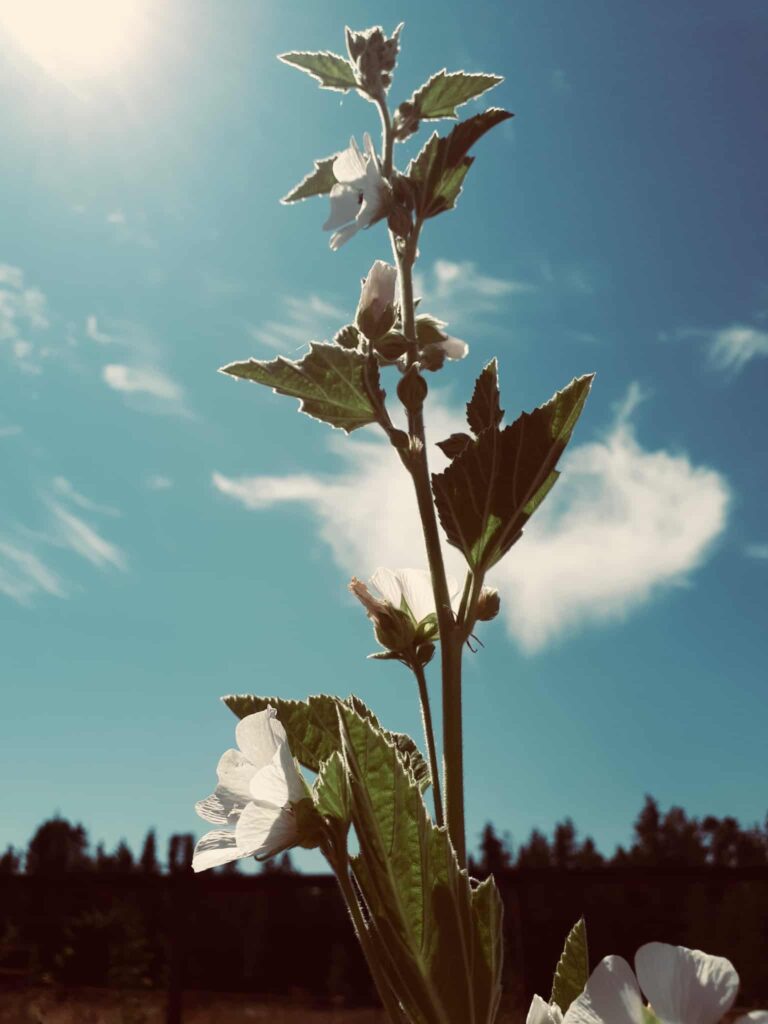
Licorice (Glycyrrhiza glabra):
One of the benefits of Licorice root is that it is demulcent, but it also has been studied to have pretty broad spectrum antiviral properties, so this is a very valuable remedy here. It is excellent for balancing the very hot, dry energetics of our stimulant expectorants. The beauty of Licorice is that it can also be delivered as a tincture, whereas marshmallow typically has to be delivered in a powder or in an infusion (which can get a little complicated as far as compliance goes). Licorice in combination with herbs like Lomatium and Osha is an excellent combination, specifically because when you combine a moistening demulcent expectorant with a stimulant expectorant your helping to negate the possibility of imbalancing the tissue state further. For instance, if someone has a hot, dry respiratory system but they also have a viral infection. Maybe you want to give them some Lomatium and Osha for their anti-viral properties while you can give a predominant part of that formula as Licorice so that you prevent the stimulant expectorant affect of overly drying out the tissues.
This is one of the beautiful aspects of formulation- you can put herbs together in a way that makes that remedy more acceptable for that persons constitution.
Relaxant Expectorants
The last category of expectorants would be our relaxant expectorants. These are plants that are often times antispasmodics, so they are typically used for excessive constriction and tightness in the lungs. Oftentimes that can accompany a dry, tense type cough. These are the remedies that are used to dilate and open up the airways.
Lobelia (Lobelia inflata):
My favorite remedy amongst the relaxant expectorants is Lobelia. This is a very powerful plant that is typically used in lower doses, 3 to 5 drop doses. I think it’s the most amazing relaxant plant in general, but it’s really excellent in terms of its specific affinity for the lungs and the respiratory system. Lobelia will literally relax smooth and skeletal muscles anywhere it’s needed in the body.
Pleurisy root (Asclepius tuberosa):
This is also an excellent relaxing expectorant. The interesting thing about many of our relaxing expectorants, but especially lobelia and pleurisy root, is that they are also amazing relaxing diaphoretics. That is why I think they’re very applicable remedies here, because they not only treat respiratory constriction, but they also support fever. That is actually the next category of remedies that I’d like to talk about.
So, expectorants are very important to consider and I think it’s good to keep those categories of expectorants in mind. You really have to follow the case, when you’re working with someone with a respiratory tract infection, it changes a lot. This is something we’re seeing with the Covid infection is that typically it’s starting out as a very dry cough. So, focusing on our demulcent remedies is probably going to be important in the earlier stages. As it progresses, we’re seeing significant damp accumulation in the lungs as well, which is going to point us more towards our stimulant expectorants to help to dry out those excessive fluids.
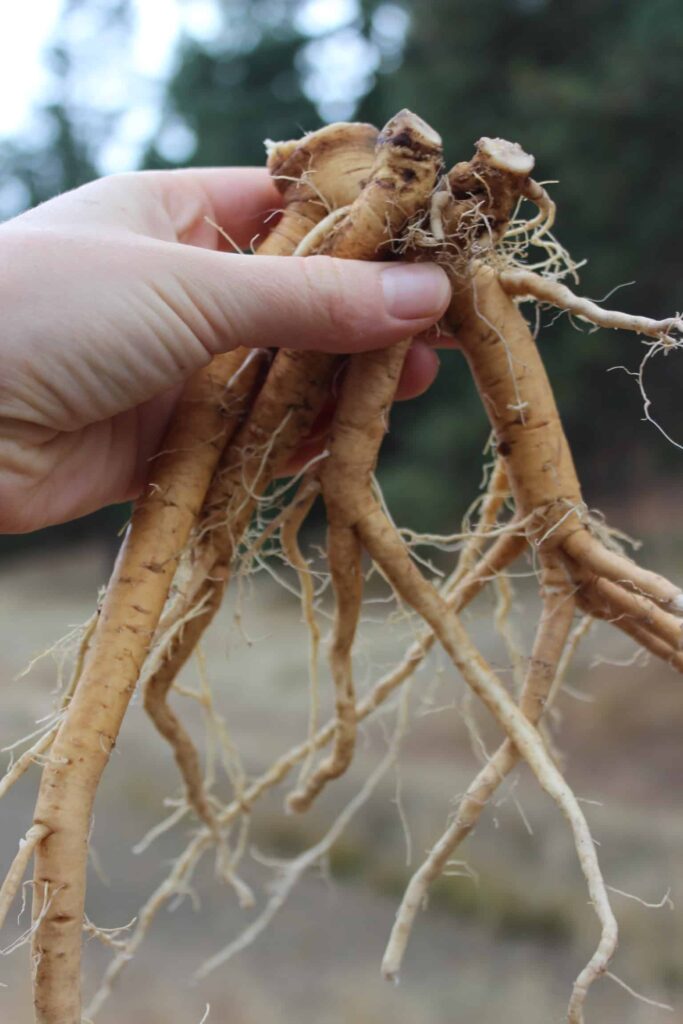
Bitter Expectorants
There are also other categories of stimulant expectorants that tend to be more bitter. They tend to be bitter and draining to fluid accumulation. A great bitter expectorant for this condition would be a remedy like Andrographis as well as Hyssop and Horehound.
Holistic Treatment of Fevers
Our other main category here is our diaphoretics and, like an expectorant, a diaphoretic is a plant that innately supports the vital force – specifically in this case with fever. This is a super important point in general when we’re looking at holistically treating a fever, that is, again, non suppression. Like the cough, the fever is an intelligent response that we want to support and help it to do its job.
The unfortunate thing is that typically fevers, again in allopathic approaches, are seen as the enemy. They’re seen as the bad guy and that we need to take that fever away. There are lots of powerful over the counter drugs that are very effective at suppressing a fever. This is really our whole category of drugs called nonsteroidal anti-inflammatory drugs or NSAIDS (aspirin, ibuprofen, etc.). These are all very powerful anti-inflammatory medicines that basically will shut off that whole fever response.
For the person who has a fever, you pop a few aspirin and that fever goes down, it’s great, you feel amazing. Which is good cause the fever is uncomfortable and no one likes having a fever, but the unfortunate thing is that during that timeframe where your fever is suppressed, that pathogen is reproducing like crazy.
When a pathogen enters the body, your immune system responds to it and reads the protein structure of that pathogen and reads what it is and sends a signal to the hypothalamus, the higher regulatory centers of the brain, which controls of your body temperature, but also the peripheral venting mechanisms, the opening and closing of the pores of the skin. The way a fever works is that in the hypothalamus, the basal set point of the temperature is increased and then the pores of the skin are closed and body temperature goes up.
The whole premise of that fever is that heat is basically cooking out, so to speak, that pathogen typically through denaturing protein structures. When that fever is suppressed, that’s not happening anymore, thus that virus is able to reproduce. I think a really important thing to remember here in this Covid situation is that if someone has a fever, they probably shouldn’t take an NSAIDS. I know they bring a lot of relief and make you acutely feel better, but with how fast this virus moves I think that period of time where the fever is suppressed can be very dangerous. It’s important for people to know that because most people don’t think it’s that big of a deal because it makes you feel better.
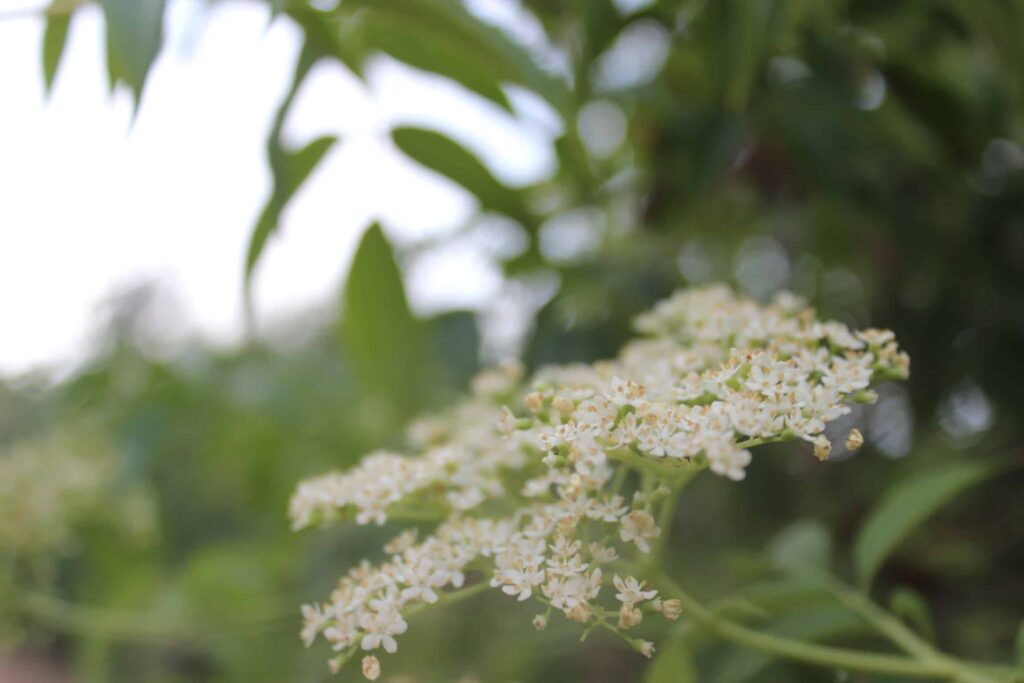
Diapohoretics
These are plants that support the fever in doing its job. Like expectorants, there are two sub-categories of diaphoretics that I think are important to understand. The first is, again, our stimulant diaphoretics.
Stimulant Diaphoretics
These are typically hot, dry plants and these are remedies that usually are circulatory stimulants. Like the expectorants, they are warming, pungent, aromatic, very rich in essential oils. They typically warm the stomach and the digestive system push blood out to the periphery. Think of a time when you’ve had a really ripping hot hot sauce and then get sweaty – you’re directly experiencing the stimulant diaphoretic property of cayenne or really any spicy pepper.
Some examples of stimulant diaphoretic remedies include:
Cayenne, Ginger, Garlic, Black pepper, and Horseradish
In terms of fever, what we see is that oftentimes fevers move in stages and that can be traced to what’s going on physiologically in the body. Oftentimes, earlier stages of a fever, you actually feel cold, this is when your hypothalamus has reset the basal body temperature to say… 102 or 103, when normal is 98.6 or something. So once the hypothalamus has reset that basal body temperature point, you feel cold. This is typically where you feel cold shivers, low energy, pale skin, sluggish, feeling sick; but you’re not hot and sweaty and red and tense and really feeling feverish. That’s when you want to use your stimulant diaphoretics. The stimulant diaphoretics are for when the person looks and feels cold.
Relaxant Diaphoretics
In contrast, we have our relaxant diaphoretics. The thing about the relaxant diaphoretics is that these are used for later stages of a fever. When the person is hot, they’re sweaty or maybe they’re hot and dry. You’ll oftentimes see redness on the skin and tongue, you’ll feel the pulses very rapid. They may be having a hard time sleeping and could be getting muscle aches and pains and they are genuinely feverish. This is where we use the relaxant diaphoretic.
The way a relaxant diaphoretic works is just like it sounds, these herbs relax constriction in the periphery. Michael Tierra says that in Chinese medicine these plants are referred to as surface relieving plants. The body’s trying to trap all this heat in, but we want to keep things moving. A relaxant diaphoretic will relax the tension in the pores and they’ll relax tension in the capillary beds so that the blood can flow all the way up to the surface and that internal heat can be released. What that’s doing is just moving that fever along faster and it’s actually getting it all the way out to the outside of the body rather than keeping that heat trapped at the core level. Relaxant diaphoretics are plants that are sometimes very bitter and are sometimes aromatic or acrid in quality as well.
Boneset (Eupatorium perfoliatum)
This herb is my top number one relaxing diaphoretic. Boneset is a very powerful plant, one of the most reliable relaxant diaphoretics in the Western materia medica. Traditionally there are different varying opinions on why this plant is called Boneset, but one is that it was used for “breakbone fever.” This name oftentimes refers to a malarial type fever where there’s deep seated aches and pains in the joints and muscles. Boneset is very specific for the fever with the aches and the pains.
Lobelia (Lobelia inflata):
I mentioned Lobelia is a very acrid tasting plant and that acrid taste usually indicates a relaxing effect. Lobelia is really nice there if we’ve got constriction in the lungs, as well as fever so it’ll help both sides of that equation.
Pleurisy root (Asclepius tuberosa):
Then again, we see Pleurisy root here as an excellent relaxant diaphoretic as well as relaxant expectorant. This herb also has a bit of a moistening property in the lungs. One of the specific indications for Pleurisy root actually is very hot and dry up above in the respiratory tract with a very damp condition lower down in the respiratory tract. That’s a pretty specific indication for Pleurisy root.
Yarrow (Achillea milliafolium):
This is one of the most important stimulant diaphoretic herbs. I think this is a very indicated plant here, as it moves the blood very well and is very supportive for fever, but also has a pretty nice broad-spectrum antiseptic property.
Relaxant Diaphoretic Triplet Tea:
Elder flower (Sambucus spp.), Peppermint (Mentha piperita) and Yarrow
These are our classic relaxing expectorants which constitute a pretty classic triplet formula in Western herbalism used to treat fever.
These are some of what I see as being some of the more important remedies here to consider in the treatment of fever as well as in the treatment of cough, both of which oftentimes accompany viral respiratory route infections. Those are our primary actions and therapeutic categories and a few examples of plants that you would want to consider.
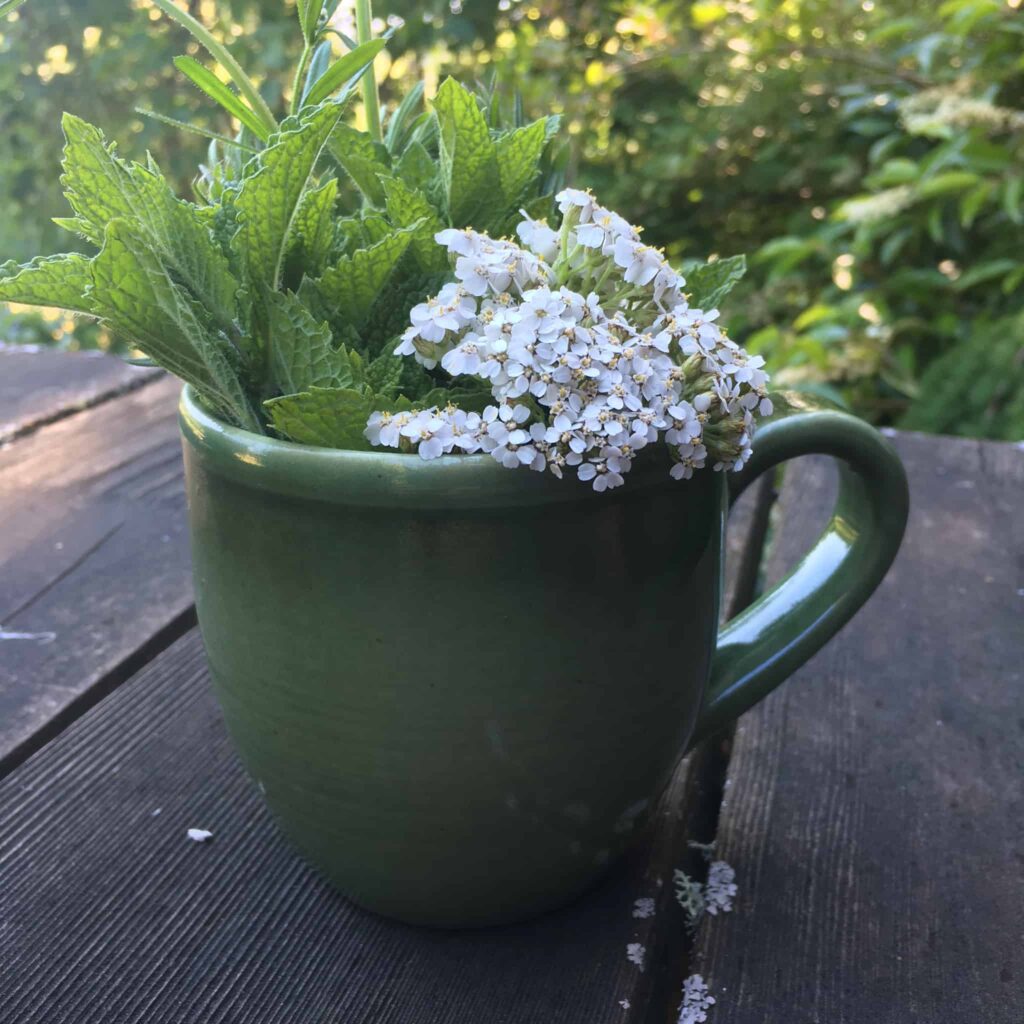
Lymphagogues
There are some additional categories of herbs that might be secondary to consider in this application and one is the lymphagogue action. Maintaining the health of the lymph, keeping the lymph moving attending to any lymphatic swelling is very important in the treatment of any type of acute infection because the lymphatic system is a central location where a lot of our immunity is, it’s really like the filter for our body. We want to make sure that lymph keeps moving which is what our lymphagogue remedies do.
Red Root (Ceanothus americanus, C. velutinus, Ceanothus spp.)
This herb is among my top two lymphagogues that I work with quite often. There are many species of Red Root. Ceanothus americanus is the more common one, but there’s lots of different types of Red Root which are medicinal. Ceanothus velutinus was a species that I had used a lot when I lived in Southern Oregon. Red root is amazing for all manner of lymphatic stagnation, swollen spleen, swollen liver. It’s very bitter and astringent. Keep in mind, this is a very drying plant.
Poke root (Phytolacca americana):
This is a very very strong lymphagogue plant. It is generally considered a low dose herb in herbal medicine because higher doses of it can be a little irritating to the digestive system. That being said, I do know of practitioners that use Poke root in actually pretty high doses. Typically, they’re treating pretty severe diseases like cancer in those cases.
Red root and Poke root are two really good lymphagogues to consider. I consider them to be more on the stronger side of the lymphagogues, but this is a situation where if someone’s got a lot of lymphatic swelling, we want to really get that moving.
Red Clover (Trifolium pratense)
This is generally regarded as a mild to moderate lymphagogue and is an effective herb for cleansing the lymphatic system. An additional benefit of Red Clover is that it’s a moistening expectorant as well. A good approach for herbalists is to consider which herbs cover the most of what we need to address in a person when you’re choosing remedies for them. For example, if someone has a dry cough and lymphatic swelling, rather than giving them a demulcent expectorant and a lymphagogue, you could get both of those desired herbal actions in one herb: Red Clover. That is what we might consider a specific remedy for that person’s presenting symptoms.
Cleavers (Gallium aparine)
Though some people consider Cleavers to be a weaker herb, I’ve seen Cleavers work miracles. It is preferred to make sure you’re using Cleavers fresh, as dried Cleavers is generally considered pretty inactive. I primarily use a fresh tincture of the flowering aerial parts, including the leaf and stem. Some practitioners use a frozen succus or juice of fresh Cleavers, or even a succus that has been preserved in a small amount of alcohol.
Calendula (Calendula officinalis):
Calendula is a really excellent remedy here as well in the way it supports the body on so many levels – from the lymphatics and tissue healing to the bitter tonic properties in the liver and inflammation modulating properties as well.
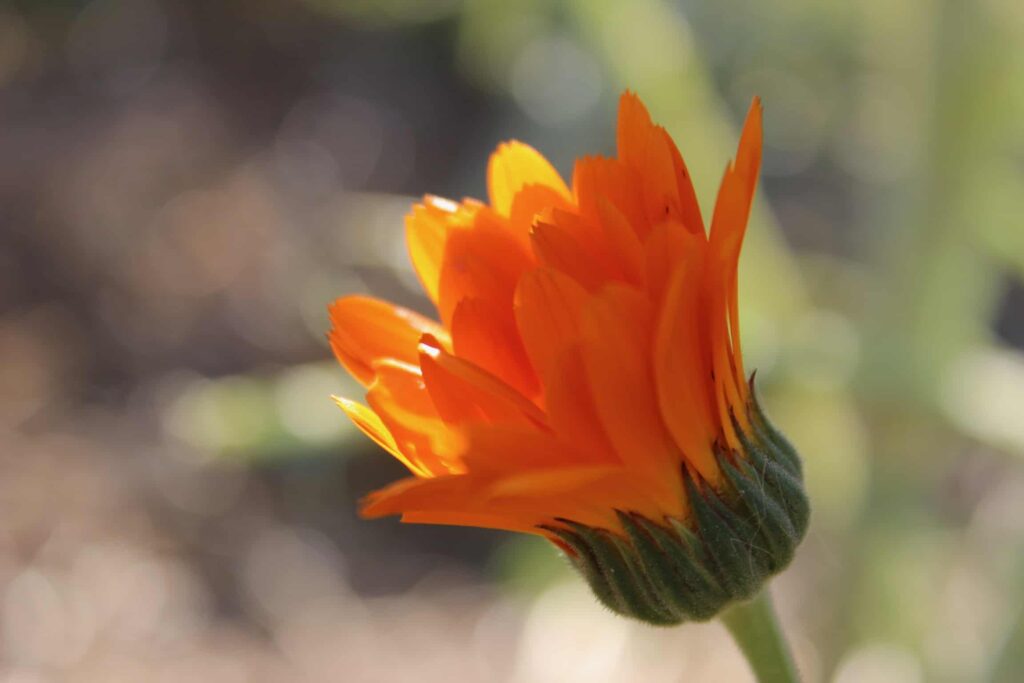
Antiviral Herbal Remedies
The last category of herbal actions that I’d mention would be the “antivirals”. I’m not a huge fan of thinking in this way about plants because oftentimes the whole concept of a specific herb being antiviral is based off of petri-dish studies of isolated plant constituents. In such cases there can be jumps in logic that happened where we take an isolated chemical of a plant and we put it in a petri-dish with some sort of virus and we see that the isolated plant chemical killed the virus or deactivated the virus and then we say, “Oh, this plant cures viruses in human beings”. No, that single constituent in the plant killed an isolated virus in a petri-dish. That’s what that means. I think we can learn something valuable from scientific research about plants, yet I also believe it’s really important that we don’t make too large of leaps in terms of what we derive from that information.
Generally speaking, some of the main remedies that are considered antiviral herbs for the respiratory system are Lomatium and Osha, which we covered a bit earlier in this post.
Below is a tincture formula I put together for our friends and family members, such as my mother-in-law who is working on the front lines at the hospital and needs some extra strong protection for her respiratory system.
Anti-Viral Respiratory Tincture Formula:
20% Lomatium root (Lomatium dissectum)
20% Osha root (Ligusticum grayii)
20% Balsam Root (Balsamorrhiza sagitatta)
15% Echinacea root (Echinacea purpurea)
15% Elderberry (Sambucus cerulea)
5% Red Cedar fronds (Thuja plicata)
5% Licorice root (Glycyrrhiza glabra)
Usnea (Usnea longissima, Usnea spp.)
This is a lichen which is best taken as a tincture specifically to extract the active constituents. Usnic acid is one of the main compounds found in this lichen which has been shown to be a very broad spectrum antiseptic, antimicrobial, antibacterial, and antiviral. The one thing about Usnea that we have to be a bit cautious of is that it also has some fever suppressing attributes to it. It actually is considered a febrifuge, or something that will lower a fever, but not like a diaphoretic. I don’t personally like to use usnea when someone has a fever unless they really need to get that fever down.
Licorice root (Glycyrrhiza glabra):
I’m mentioning Licorice again because I think it’s an incredibly valuable plant here to consider in this situation. It’s incredibly soothing with its demulcent properties and is also inflammation modulating
Elderberry (Sambucus cerulea, S. nigra)
Of course Elderberry is considered a catchall antiviral remedy. It seems like there’s been some interesting things coming out about Elderberry that questions its antiviral attributes or whether it’s really safe to use during acute viral infections. However, again I’d caution against getting too worked up about the hype created from scientific studies of isolated constituents that aren’t founded in clinical application. I’ve used Elderberry clinically many times for acute viral infections and it’s always works quite well.
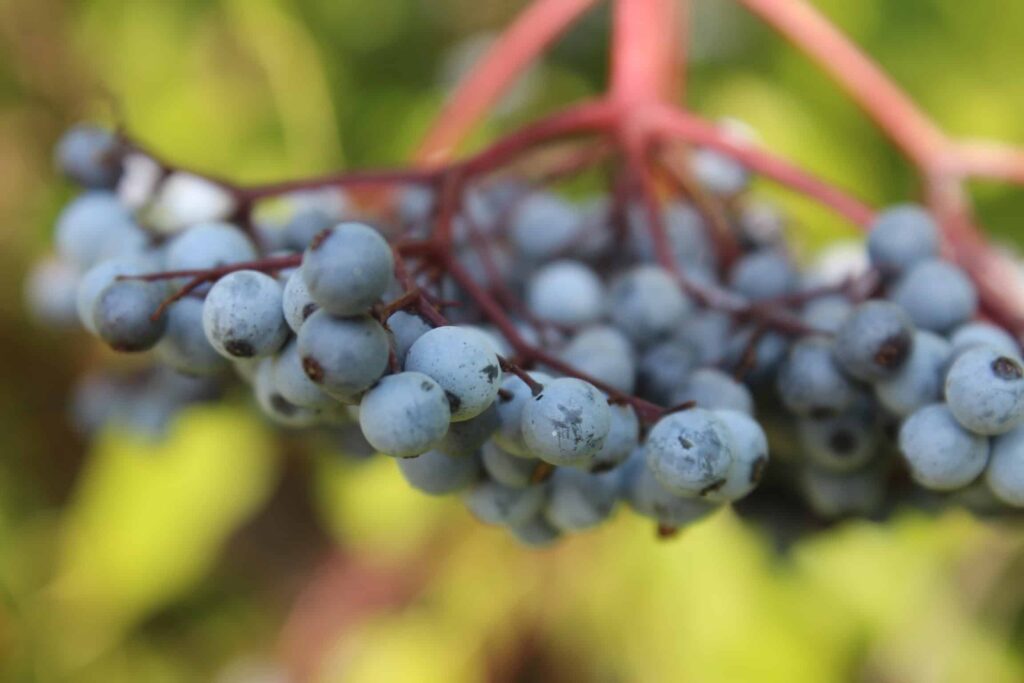
In conclusion, these are some of the main remedies and overarching categories of remedies that I would encourage you to look into and to work with as a preventative means for yourself and your family and your community in light of the Covid-19 infection.
Slowing down, Staying Centered & Grounded
I just want to close by saying, there’s this whole physical infection going on with this virus right now, and yet there is a psychological virus that’s happening too in terms of a lot of perpetuation of fear and panic out there in the culture. I do think there is reason to be cautious and there is certainly reason for us to be proactive, however there’s a lot of paranoia that’s being induced in people as well which is important for us to keep in mind right now.
The whole way a virus functions is that it doesn’t have its own DNA. It doesn’t have its own identity and the way it works is that it invades the cell docks onto our own DNA so that it can reproduce itself. I think that’s very metaphorical in what is happening for some people psychologically. Something is getting into their minds and maybe overriding their logic or overriding their ability to maintain a sense of calm and center and clarity.
I just want to encourage everyone right now to stay as calm and centered as possible. This is a huge time here for us here on Earth. I think for us as herbalists, this is a really important time for us to step it up and to really take on a new level of responsibility in terms of our work with medicinal plants and our service to our families and our communities. Many of us have a little more time on our hands to level up our herb skills, to read those books that have been collecting dust and to log into your online herb courses and really learn what you need to learn in order to be an effective herbalist.
Many of us have been feeling that the Earth has been reaching a tipping point for a long time. Human beings have been living on this planet in a way that is very unsustainable, causing a lot of harm to all life, ourselves included. I believe that the Earth is intelligent and is constantly striving to maintain a dynamic state of equilibrium. This very well might be a Gaian response to humanity and trying to regain some semblance of that equilibrium.
While this is situation is incredibly traumatic and there’s been a loss of life, chaos, and a lot of fear. There have been a lot of ways that this is affecting humanity and the world as a whole in incredibly negative ways. However, there are multiple sides to everything and there is also some positive that can come out of this. We’re getting our garden ready right now and as we’ve been contacting our seed companies that we usually get seeds from, they’re sold out of a lot of stuff. This is great! Many people are putting in gardens for the first time and are taking an interest in more homesteading skills. It’s good for us to be responsible for our food, taking care of the fundamentals that give us life and maybe not being quite so reliant on having to get our food from the grocery store.
We’re also hearing that places that are traditionally very polluted have the cleanest air quality they’ve had in who knows how long, so again there are some critical ways we’re seeing the impact our slowing down is having on the Earth in a positive way. I do feel like this whole aspect of humanity being forced to slow down in a really big way right now is having a positive effect on the earth as a whole.
It’s easy for us as humans to really just focus on how things affect us as humans. Personally, I believe this way of thinking that has gotten us into the ecological situation on this planet that has been unfurling for the last hundred years or so. Pulling back and looking at the Earth as a whole and life as a whole intelligent being is what we need to be doing right now.
I just want to encourage you to just stay strong in these changing times. To have to put your faith and your belief in nature, to put your faith and your belief in the plants that you love and work with and depend upon.
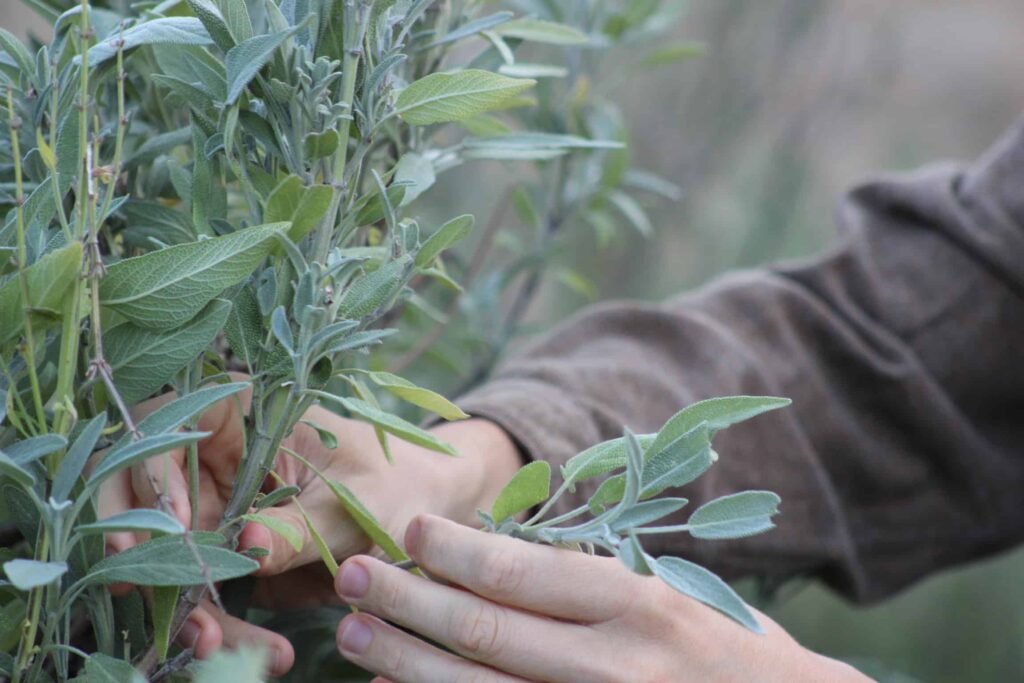
The Work of the Herbalist in these Times
These plants that grow on this Mother Earth are aware of what’s going on. These plants are intelligent, these plants are here to help us and I think they also have greater roles beyond that. They have ecological functions, they have their whole other roles that are outside of the sphere of humans. There’s a reason that these plants have these medicinal effects upon human beings.
As herbalists, this is the time where we really have to put our medicine where our mouth is and to really put our faith and our belief in these plants. It’s time to utilize them with integrity, reverence and respect and to move beyond our own internal blocks that stop us from helping people with our knowledge, skills and with the plants that we carry as medicines.
So I just want to say, hang in there, stay strong and put your belief in your plants. Hopefully some of what you learned here benefits you and helps you and your family and your community.
I also want to say thank you to all of the people that are working in necessary businesses; for the people that work at the grocery stores, for the people that are in service industries, for people in the hospitals, for the first responders, for everyone that is out there in the world and on the front lines, to all the people that are trying to figure out what to do to make this all come back into balance.
I just wanted to take this time to share some of my thoughts on the Covid-19 situation because I’ve been getting a lot of requests for it, so hopefully this serves you well.
Take care and be well,
Sajah
For further resources on COVID-19 and what we can do as herbalists, be sure to check out this comprehensive page put together by the American Herbalist Guild: https://www.americanherbalistsguild.com/covid-19-resources#AHG


